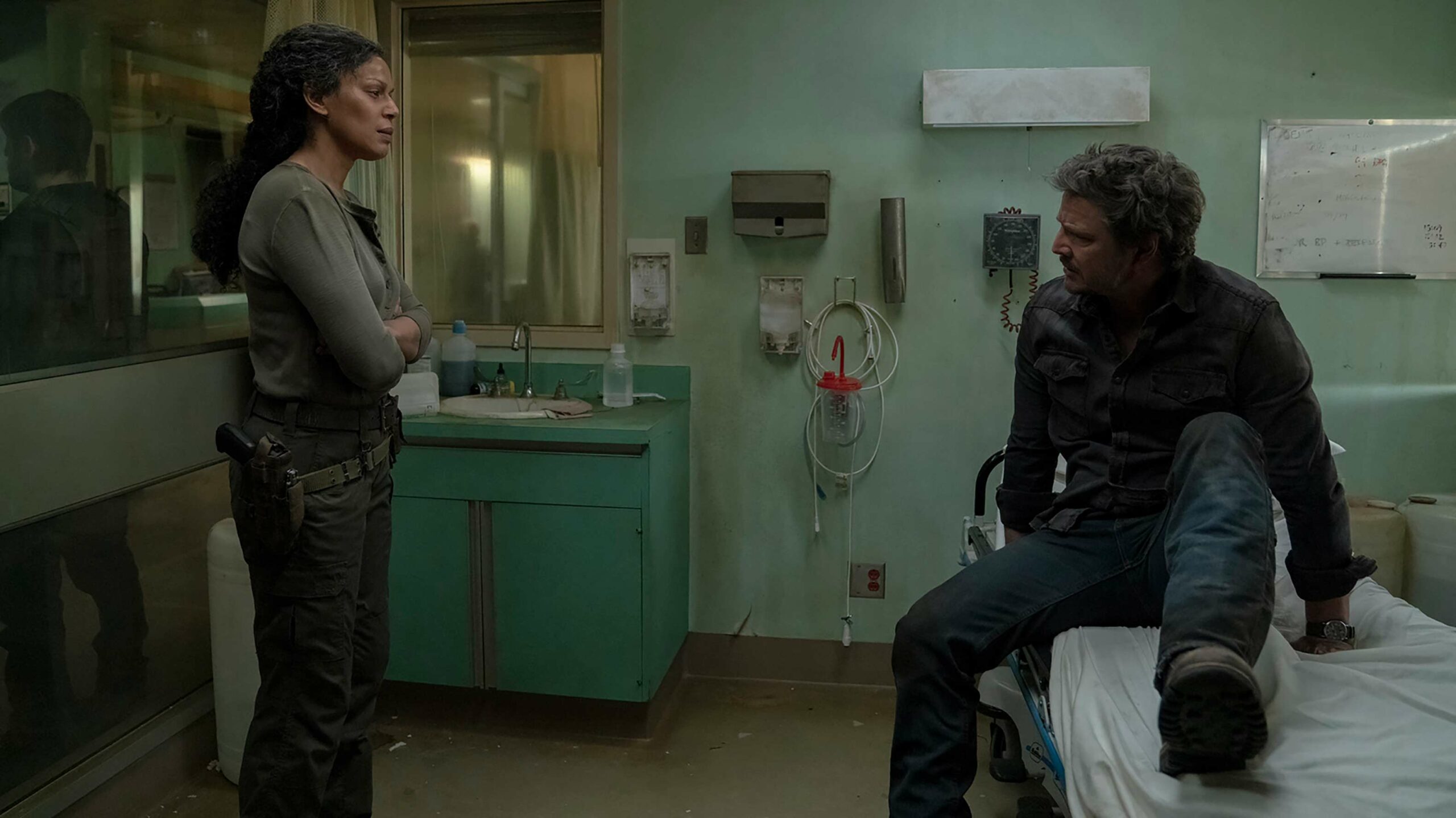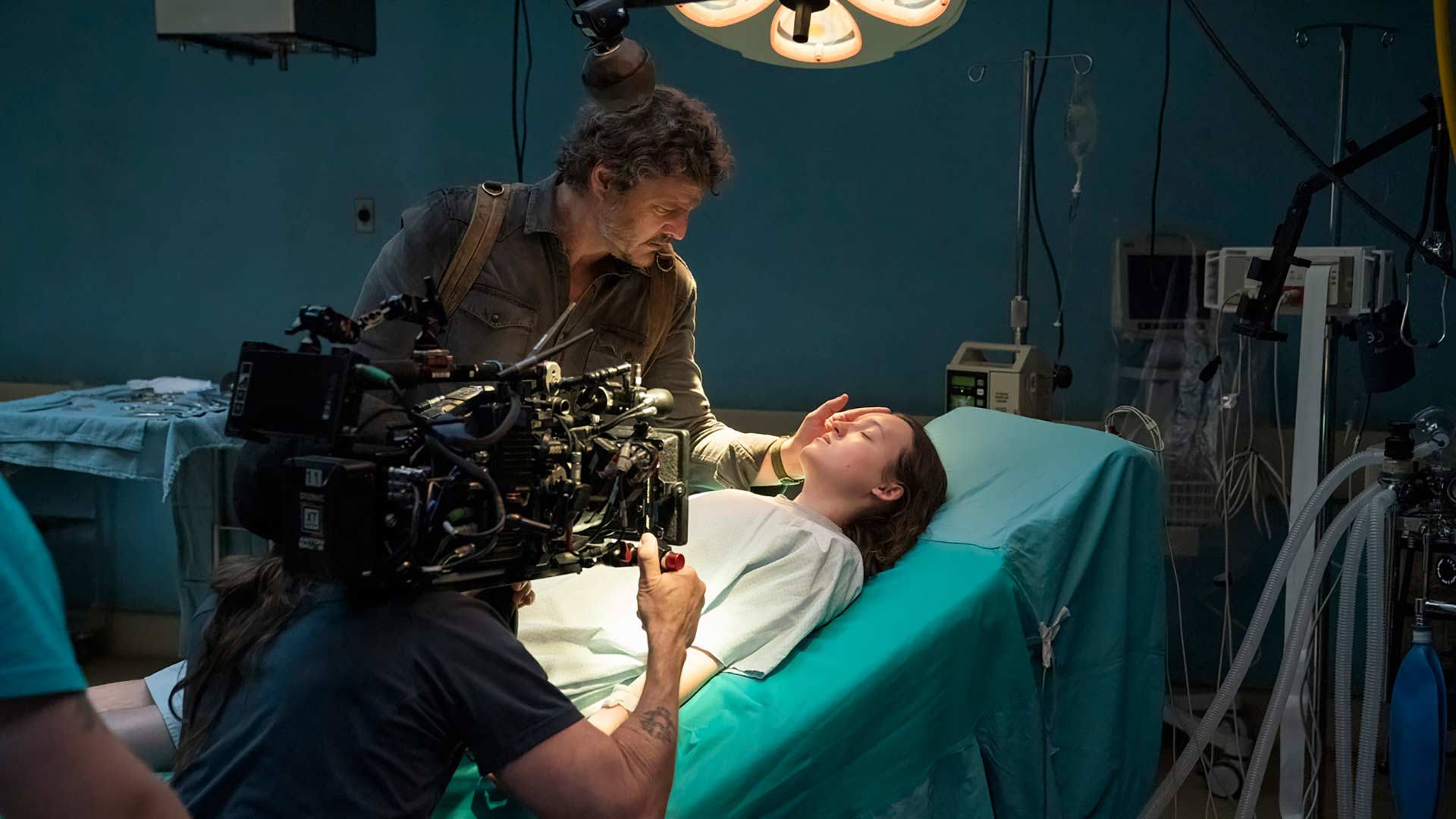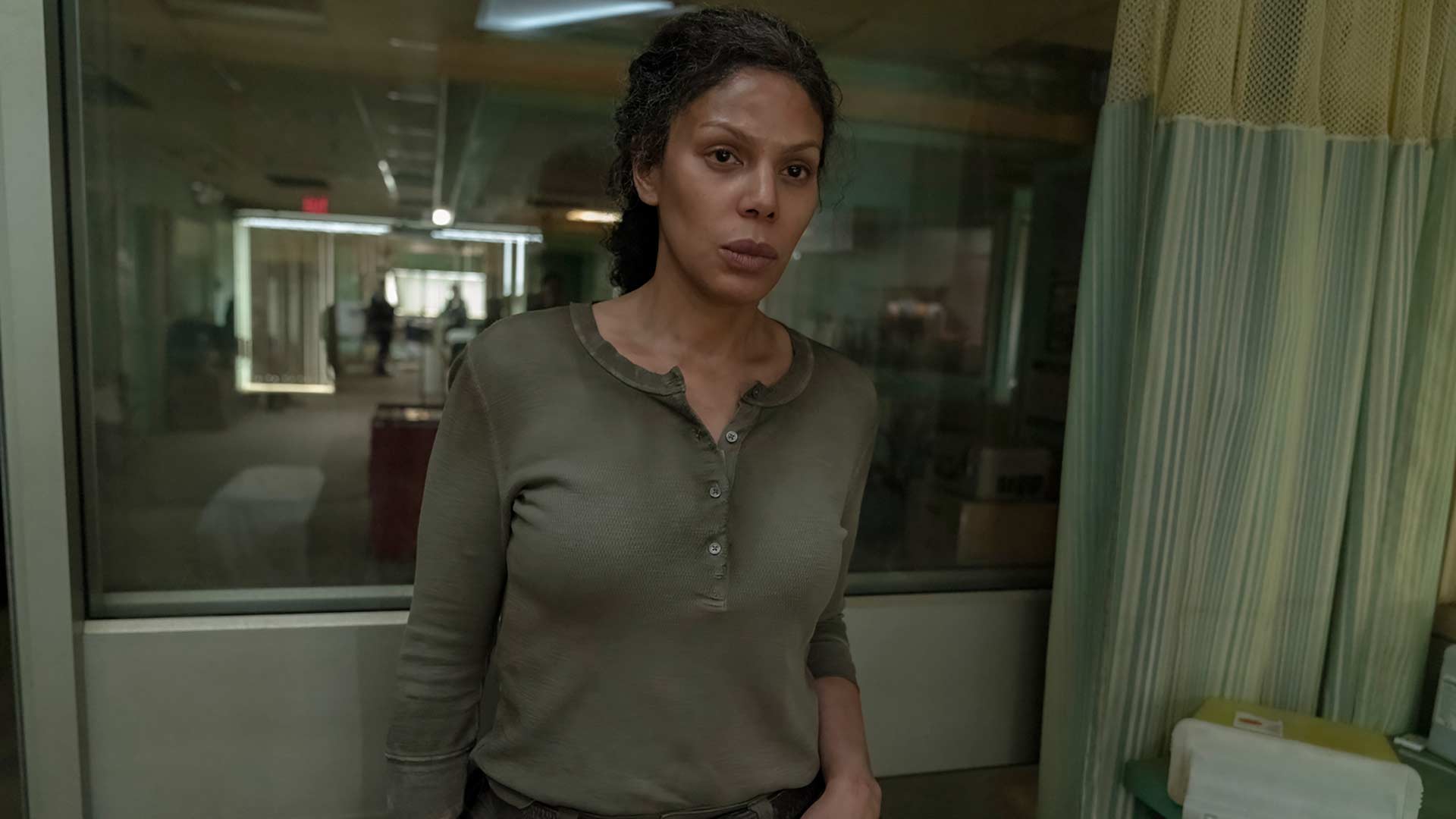
*Warning: full spoilers for The Last of Us Season 1 to follow*
The Last of Us ended in a big way: a tense firefight in a hospital. Like many aspects of the HBO series, it was a faithful retelling of the events of the 2013 eponymous PlayStation game.
That includes the controversial decision that Joel (Pedro Pascal) makes at the end to take Ellie (Bella Ramsey) away from the Fireflies militia group’s lab, refusing to lose her to a surgery that could have produced a cure to save humanity. This leads him to kill a slew of Fireflies along the way.
In the Alberta-shot show, this is all takes place in a Salt Lake City hospital, but in real life, HBO used a hospital outside of Calgary. Per Travel Alberta, this hospital is Grande Prairie’s Queen Elizabeth II Ambulatory Care Centre.
 Speaking to Variety, production designer John Paino revealed some details about how his team turned the real hospital into the climactic battlefield we see in the show.
Speaking to Variety, production designer John Paino revealed some details about how his team turned the real hospital into the climactic battlefield we see in the show.
Interestingly, Paino notes that he originally thought they’d have to build a hospital from scratch, but they found a “disused” one — the Queen Elizabeth II Ambulatory Care Centre — for the production instead. From there, he says the team repainted the hospital and aged it up to make it look believably weathered for the post-apocalyptic setting. He adds that the little murals you can see when Joel visits the paediatric wing are taken straight from the game, another testament to the series’ immaculate attention to detail.
Additionally, Paino says he thought the Fireflies would be using construction site-esque portable generators, so his team deliberately used dim lighting accordingly. He says this gives the setting “a dark and moody vibe,” which certainly fits with Joel’s harrowing actions. Meanwhile, plastic barriers were brought in and strewn about the facility as a “nod” to when infected people were being brought in earlier in the outbreak.
Elsewhere in the interview, Paino touched on the pivotal giraffe scene. While the Making of The Last of Us special already revealed that this was a real animal named Nobu from the Calgary zoo, Paino expanded on some of the work the team did with it. Impressively, he says the crew spent a month and a half setting up green screen panels in an enclosure containing Nobu while trainers kept the giraffe comfortable. This allowed Pascal and Ramsey to approach the giraffe and feed it while giving the VFX team the ability to make the filming location look like the building rooftop in the show.
“That’s Hollywood magic of [visual effects supervisor] Alex [Wang] isolating the giraffes and putting them on our set,” said Paino. “That was probably the most complicated piecing of VFX stage, scenery and location I’ve worked on.”
Over the course of the show, Paino has provided a slew of interesting behind-the-scenes looks at the production. This includes transforming Canmore — Pascal’s favourite place in Alberta — into Jackson, Wyoming and an old Calgary mall into an abandoned playground for Ellie and Riley (Storm Reid). Overall, Paino says he was “shocked” at how “clean” Alberta ended up being compared to the United States.
The Last of Us is now streaming on Crave in Canada. Season 2 — which will partially adapt The Last of Us Part II — is currently in development, although a release window has yet to be confirmed. That said, Pascal recently suggested that it will once again film in Alberta.
Image credit: HBO
Source: Variety
Update: 16/03/2023 at 11:50am ET — Updated to clarify that Grande Prairie isn’t “just outside” of Calgary.
MobileSyrup may earn a commission from purchases made via our links, which helps fund the journalism we provide free on our website. These links do not influence our editorial content. Support us here.



